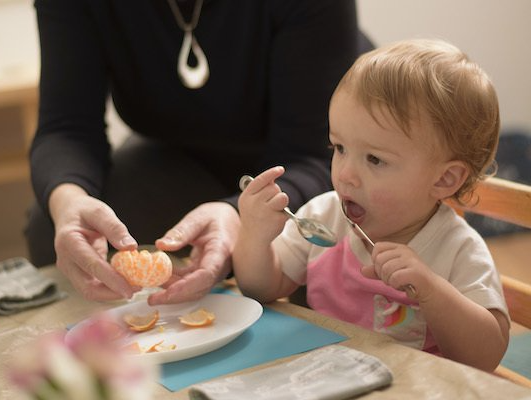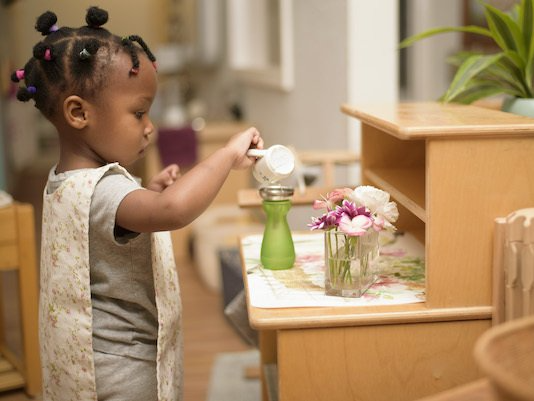So, what is the “absorbent mind?” Dr. Montessori described the absorbent mind as a mind able to absorb knowledge quickly and effortlessly. Our minds are absorbent, from Dr. Montessori’s view, from birth to age six. Let’s take a closer look -
The young child's unconscious absorbent mind is the very vehicle that allows them to absorb their mother tongue, movement (roll/crawl/cruise/walk), communicate through various cries, babbling, receptively understanding before they can express themselves with words, and more. This unconscious absorption period allows the child from birth to three years of age to begin to create themselves; self-construct.
Dr. Montessori knew the young child was going to develop through this period whether their environment was well-prepared for them or not. Young children self-construct worldwide from the most remote locations to those that are bustling with activity. The young child incarnates themselves by taking in all that surrounds them and makes it a part of their very being.
Another aspect of this truly incredible time from birth to three years is the toddler's need for order. It is not the same order found in the Children's House or older Montessori classrooms. From birth to three, our students unconsciously absorb the order around them - the order of the universe, the world, how it works and comes together, and ultimately, how they work within that order. Absorbing and internalizing this order is paramount before a child can learn the decimal system's order or the brown stair or table scrubbing.
The world of a toddler is small, tiny. Our work as Montessori educators begins by creating order in their world with a carefully prepared environment that is theirs exclusively. With great intention, the classroom environment is understated and centers around the whole first, then the parts, and then back to the whole, so the parts are understood in the child's unconscious absorbent mind. The focus for this unconscious absorbent mind (birth to age three) rests in language, movement, and order.


